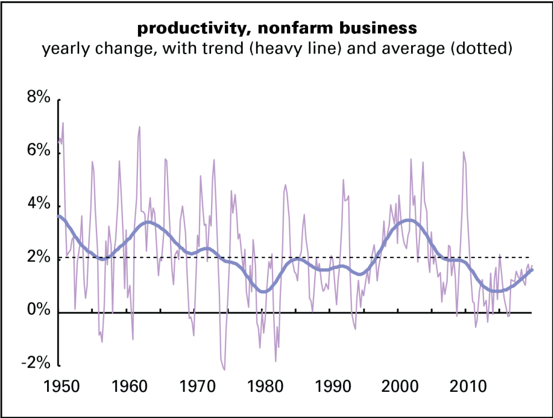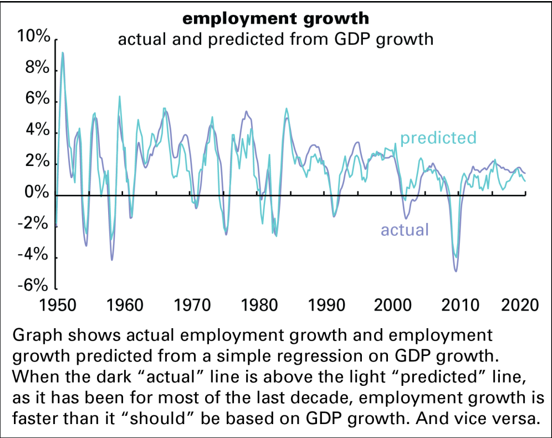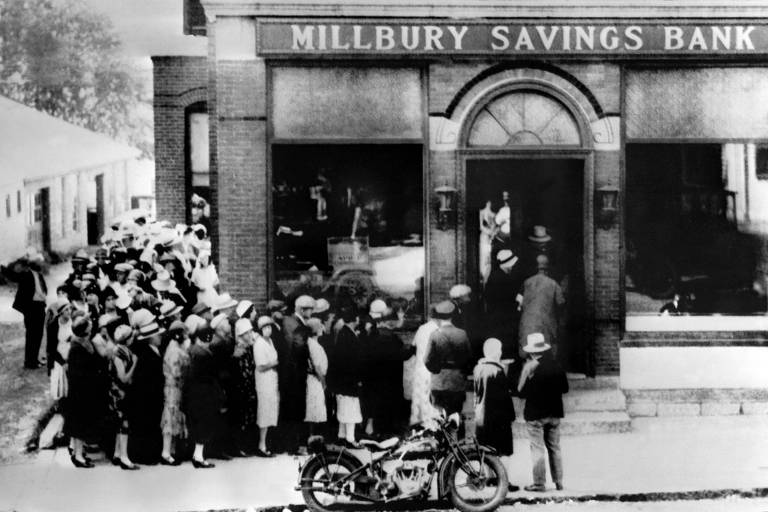Desde o final da Primeira Guerra Mundial até a década de 1970, cineastas de todo o mundo experimentaram a forma cinematográfica na esperança de despertar uma nova consciência política. Por que esse sonho morreu?
Eileen Jones
Jacobin
Tradução / Durante décadas, foi uma questão candente entre cineastas, críticos e públicos com mentalidade política - qual a forma que um filme assumia. A forma como foi filmado e cortado, a forma como o som foi gravado, como a mise-en-scène foi tratada; até mesmo os processos pelos quais o filme foi produzido, distribuído e exibido foram tão importantes quanto o conteúdo - se não mais. Do nosso ponto de vista, é difícil imaginar, mas desde o final da Primeira Guerra Mundial até ao final da década de 1960, cineastas de todo o mundo esperavam utilizar estas experiências de forma a desbloquear uma nova consciência revolucionária nas audiências de todo o mundo.
Isso foi há muito tempo atrás. Quem hoje discute as implicações políticas da abordagem de edição de um filme, ou defende um estilo de performance brechtiano que promoverá espectadores ativos e politizados, ou opõe-se fortemente ao “Mickey Mouse” dos efeitos sonoros ou às bandas sonoras de filmes emocionalmente coercivas?
Hoje, conteúdo é tudo. É considerado mais do que suficiente simplesmente ter um tema politicamente promissor: O Jovem Karl Marx, A Morte de Stalin, Peterloo. Esses filmes variam em qualidade e efeito, é claro, mas todos estão unidos em sua forma cinematográfica mais ou menos padrão. O diretor Ryan Coogler (Pantera Negra, Estação Fruitvale) anunciou recentemente que estava fazendo um filme sobre o líder assassinado dos Panteras Negras, Fred Hampton. Apenas a promessa de conteúdo político socialista foi suficiente para gerar entusiasmo - não precisamos de ter esperanças quanto à forma.
E talvez essa seja a maneira certa de ver as coisas. Afinal de contas, não é fácil avaliar até que ponto uma forma cinematográfica supostamente revolucionária “funcionou” nos espectadores, mesmo na União Soviética da década de 1920, então há alguma razão para regressar a essa velha obsessão? Parasita, de Bong Joon-ho, não é um grande filme, dolorosamente memorável, mesmo que seja feito em termos polidos, mas inteiramente convencionais, que obedecem às “regras” internacionais da produção cinematográfica narrativa?
As pessoas mal sabem que essas regras do cinema narrativo foram determinadas gerações atrás: cinematografia contida que não prejudica a narrativa, edição suave que de forma alguma o afasta da psicologia do personagem e uma trilha sonora que sincroniza perfeitamente com as ações em tela e ressalta as emoções representadas, nunca servindo como contraponto ao que você vê ou chamando a atenção para si mesmo. Tudo faz parte do chamado sistema de continuidade invisível, aperfeiçoado nas décadas de 1910 e 20 nas principais indústrias cinematográficas da época, mas particularmente defendido pelos estúdios de Hollywood. Integra o espectador em um espelho agradavelmente idealizado da realidade através da identificação com o protagonista - e, segundo os críticos da forma, com um conjunto incorporado de posturas ideológicas regressivas. A construção e o artifício dessa realidade, o funcionamento elaborado do aparato nos bastidores e a agenda corporativa por trás da produção em massa de filmes foram cuidadosamente disfarçados, em parte, pela recusa em chamar a atenção para a forma de uma forma que pudesse despertar o público de seus sonhos cinematográficos.
Os cineastas que tentaram contrariar o bloqueio que o sistema de continuidade invisível exerceu sobre o cinema comercial lideraram uma série de alternativas ousadamente formalistas na década de 1920, incluindo movimentos cinematográficos de vanguarda como o dadaísmo e o surrealismo; e movimentos de filmes de arte como o expressionismo alemão, o impressionismo francês e a montagem soviética.
Sergei Eisenstein, the most influential of the Soviet Montage filmmakers, argued specifically that through montage he could create a kind of “filmic reasoning” that would allow him to adapt Das Kapital to film in such a way as “to teach the worker to think dialectically.” In films such as Strike, Battleship Potemkin, and October: Ten Days That Shook the World, Eisenstein put in motion his theories of “collision montage,” based on Marxist dialectics: “The contents of one shot should collide with another like a dialectical thesis and antithesis, resulting in a synthesis in a viewer’s mind.” The clashing hammer-and-tongs result would enable a new kind of “radical filmic thinking” that spectators would take with them out into the world.
In October, he did some of his most ambitious “intellectual montage” in a critique of religion generated by a series of jarring shots of religious icons, with the Russian Orthodox Christ familiar to his audience members made unfamiliar through juxtaposition with brutally alienating icons from religions around the world.
Eisenstein’s theories were part of a widespread modernist view that film constituted exteriorized, objectified brain processes. Hugo Münsterberg, the first film theorist, argued that cinema was such an explosively popular form because it mimicked the way our minds operated — flashbacks imitated memory, and close-ups mirrored our mental ability to focus our attention on a particular object. Eisenstein argued that films had already been harnessed not just to mimic thought processes, but to create and foster them, and that Hollywood filmmaking, busy training generations how to think in capitalist terms, had to be counteracted.
His Battleship Potemkin (1925) set an early standard. It was banned in public theaters in many countries, including France and the United Kingdom, but it became a staple in private screenings at union halls and cinema societies worldwide. The film’s content alone was rousing enough, a dynamic re-creation of a 1905 sailors’ revolt against authoritarian abuse on the Potemkin that had such extensive public support it led to an infamous massacre of the citizens of the port city of Odessa by Tsarist troops. But it was the incendiary editing that made the film legendary. The Odessa Steps sequence, still the most celebrated montage in cinema other than Alfred Hitchcock’s shower scene in Psycho, was the best-known instance of formal daring so powerful, “anyone . . . could become a Bolshevik after seeing the film,” as Nazi propaganda minister Joseph Goebbels later wrote in grudging admiration.
Joseph Stalin ended the Soviet Montage experiments, claiming that ordinary Soviet citizens couldn’t understand these films, with their esoteric forms that were aligned with decadent European art and cinema movements. He instituted Socialist realism as the mandated style across the arts, and for decades, Soviets watched mainly simplified, heroic, “people-centered” and “party-minded” entertainment narratives that taught clear-cut lessons about how to be a better communist. But the formalist movements also met resistance internationally as the Depression, the rise of Fascism, and war led to waves of investment in documentary and realist cinema movements.
The most influential of these was Italian neorealism from the mid-1940s through the ’50s. It emerged from the Second World War, rejecting the film style of the Fascist-controlled Italian film industry, as well as Hollywood entertainment practices that focused on the glossy doings of the affluent, ignoring all the brutal realities right outside studio doors. Powered by socialist and communist filmmakers caught up in the “Italian Spring” of left-wing political hopes following the war, the films featured on-location shooting that favored the bombed-out rubble of Italian cities, as well as the use of natural lighting and nonprofessional actors, creating a harsh, stripped-bare aesthetic that seemed like a shocking departure for narrative films at the time. Roberto Rossellini, whose film Rome, Open City (1945) helped define the form, said heretically, “If I mistakenly make a beautiful shot, I cut it.”
André Bazin argued that the key to Italian neorealism’s success was the sustained deep-focus long shot, uninterrupted by 1920s-style montage cutting or optical tricks of any kind. As Mike Wayne argues in Marxism Goes to the Movies, the deep-focus long shot allowed for the discovery of complex social reality, as the spectator’s eye is allowed to roam about the frame in a way that’s impossible with either Soviet Montage or the Hollywood continuity system. The latter functioned to cut the scene according to plot motivation, itself governed by the psychology and aims of the protagonists. Match-on-action and eyeline-match shots are crucial continuity editing strategies linking . . . [the spectator’s emotional experience] to the individual character powering their way through the dramatic scenario, according to the American individualism which Hollywood prioritized.
Both the Soviet Montage and Italian neorealist filmmakers recognized in Hollywood cinema the same ideological stealth-bomber techniques, but they arrived at wildly opposing strategies of combating them. Neorealism tended toward the drastic loosening of narrative structures, in particular a rejection of causality typical of the “tight plotting” of Hollywood films. Tangents, digressions, coincidences, and a reverence for the repetitions of daily life — defined by leading neorealist filmmakers as the experiences of the working poor — were everything.
In Brazil, the Cinema Novo movement pushed Italian neorealist, European art cinema, and French New Wave innovations toward political militance and an “Aesthetics of Hunger.” Director Glauber Rocha’s call for raw, angry, ugly films to reflect the experience of brutally oppressed people who are literally as well as figuratively hungry is manifested in his film Black God, White Devil (1964), which looks at times as if it were cut with a meat cleaver. Third Cinema filmmakers like Rocha were initially based in Latin American countries, but the movement spread to filmmakers in Asia, Africa, and other regions, fostering dreams of a multi-continent revolution rejecting the Hollywood commercial aesthetic, termed “First Cinema,” on political grounds. But they also intended to bypass auteurist art cinema movements, or “Second Cinema,” in their drive toward collaboratively made films dedicated to radical liberation movements.
The legendary Battle of Algiers (1966) straddles both Second and Third cinema — director Gillo Pontecorvo, a former member of the Italian Resistance steeped in Italian neorealist practices, put his film in service to a militant revolutionary project, working in collaboration with the Algerian people to restage — on location — pivotal (and bloody) events in their fight for liberation from brutal French occupation.
Third Cinema’s radical experiments in collective filmmaking were accompanied by a number of manifestos, such as “Toward a Third Cinema” by Argentinian filmmakers Fernando Solanas and Octavio Getino. They declared the need for a totally reinvented cinema — a cinema they themselves had no idea how to achieve at the outset. It would all have to come from trial and error, guided by a determination to subvert imperialism, educate and actively engage the political consciousness of audience members, and operate outside the system through guerrilla film-making methods and alternate distribution routes and exhibition venues. Solanas and Getino’s Hour of the Furnaces (1968) is a four-hour extravaganza of Third Cinema experimentation, beginning with a blood-pumping combination of percussive beats building to a frenzy while on-screen documentary shots of violent oppression and police brutality against protesters is intercut with quotes from Che Guevara, Frantz Fanon, and other revolutionary heroes. Famously, the film urges audiences to stop the viewing process at will in order to talk revolution among themselves.
Today, we’re soaking in a fairly tepid bath of media content. We’re so far from the language of cinematic revolution that it can seem kind of quaint to read a dead-earnest 1969 issue of Cahiers du Cinéma, when film theorists and critics believed they were “starting from zero.” In one essay, Jean-Louis Comolli and Paul Narboni proposed a system of film categories lettered A to G to alert audiences to the junk they’re consuming. Category A includes mainstream commercial films plus most art-house independent films and are “imbued through and through with the dominant ideology.” Category B is the tiny number of praiseworthy films that deal with a “directly political subject” and “attack [their own] ideological assimilation on two fronts,” that of both form and content. Third Cinema is a good example here.
The rest of the categories are trickier. Category C, for example, identifies films that have no obviously political content but nevertheless seem to operate politically because they function “against the grain” in terms of their challenging form. Hollywood film noir of the 1940s, with its nightmarishly extreme expressionistic style that could turn even formulaic crime melodramas into implied ideological criticism, can be discussed in these terms.
For Cahiers critics, B and C were the good categories. Category D, which is where we tend to operate now in terms of supposedly political, ideologically challenging films, is dire territory. These are films that have “explicitly political content . . . but which do not effectively criticize the ideological system in which they are embedded because they unquestioningly adopt its language and its imagery.”
We can imagine Comolli and Narboni shaking their heads while deploring Harriet, for example, a drearily standard biopic from 2019 that wastes an opportunity to convey the life of a revolutionary figure, Harriet Tubman, in revolutionary terms. How to convey Tubman’s “visions,” for example, which were probably caused by a murderous blow to her head with an iron weight by a slave overseer when she was fifteen? This violent act radicalized Tubman, giving her immediate access to what she conceived of as messages from God directing her in practical methods of slave liberation. Director Kasi Lemmons represents the visions as an ethereal tune with tinkling chimes accompanied by images of rushing clouds, as generic a “dream sequence” as can be conceived of in commercial cinema.
It gets very tricky interpreting where films stand ideologically, and the trickiest category Comolli and Narboni identify is Category E — once famous in film studies for the opportunities it gave grad students to examine mainstream films for “gaps” and contradictions. Category E films seem entirely absorbed within the ideologically dominant system, but they contain such ambiguities, expose such cracks and dislocations in the systemic workings of bourgeois ideology, that they become useful in “partially dismantling the system from within.” Late period John Ford Westerns like The Searchers (1956) and The Man Who Shot Liberty Valance (1962) were considered prime examples, in which the director’s conservative, patriotic celebration of America’s Manifest Destiny was increasingly complicated by brooding deep-focus cinematography, grimly fated characters, and an enigmatic sense of doom about the whole American experiment.
For those who mock this naive schematic approach, consider that at least Comolli and Narboni had a scheme for fostering revolutionary media, which is more than we’ve got. Though we’ve seen a few interesting formal developments over the past half century, it’s hard to connect them to any specific political effects, or even intentions, in that direction. The Dogme 95 movement of the 1990s seemed promising in its short-lived but all-out rejection of slick, tech-reliant commercial conventions in films, and in its embrace of restrictions on the filmmaking process that forced filmmakers back into rough neo-neorealism. But it was reduced to a stunt when its leading directors, Lars von Trier and Thomas Vinterberg, quickly abandoned their cinematic “Vow of Chastity,” which they claimed to have written while drunk.
Digital filmmaking, which further democratized the filmmaking process by making it widely and cheaply available to the public, also briefly promised some sort of alternative aesthetic that might have been harnessed for political ends. But the technology was quickly employed in full mimicry of the effects of classic cinematography. And, at any rate, we have no belief today in the politically revolutionary, consciousness-altering potential of cinema — or any other media.
Ironically, in an era when socialism at last begins to make a return and we revive again the urgent need to “foster a mass movement,” to “unify the working class,” to “build solidarity” — all the old terms and phrases — we have no corresponding plan for how we might revive the old idea of enlisting mass media in our cause.
And with the stakes so high in 2020, that’s the kind of failure of imagination that radicals today can hardly afford.
Colaborador
Eileen Jones is a film critic at Jacobin and author of Filmsuck, USA. She also hosts a podcast called Filmsuck.














